June 5-6, 2018
The drive from Billings to Helena was more beautiful than our through-the-windows photos could capture.
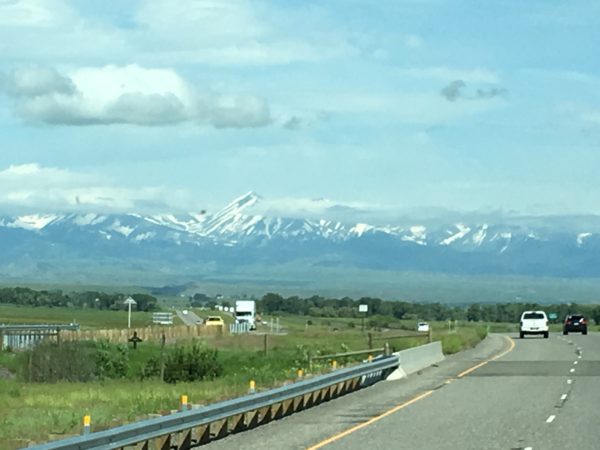
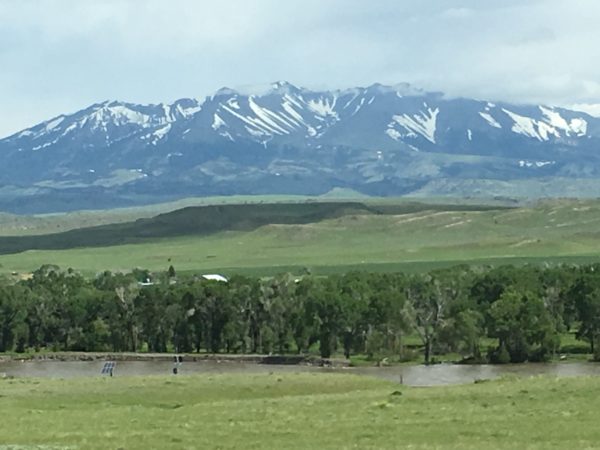
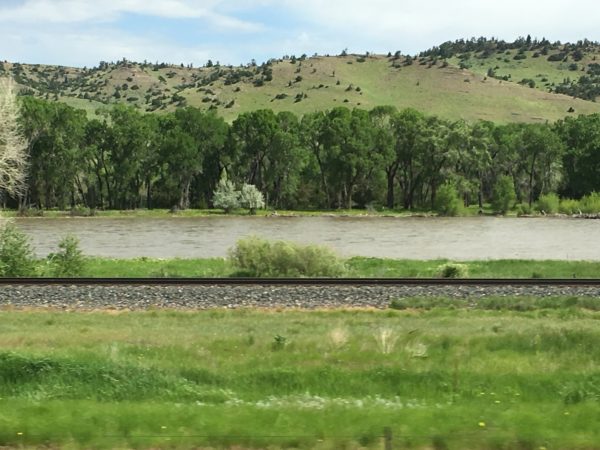
Montana Capitol
In 1805, when Lewis and Clark traveled through the area that was to become Helena, they called it Prickly Pear Valley. Sixty years later it became the mining camp of Last Chance Gulch after four miners’ last chance paid off in gold. These miners thought the area ought to be called Crabtown after one of the founders, but other miners preferred the city be named for St. Helena in Minnesota. The gold ran out, but Helena became a banking and supply center, largely because of its location near mines, ranches, and freighting routes. In 1875 it became the territorial capital and the state capital when Montana was granted statehood in 1889.
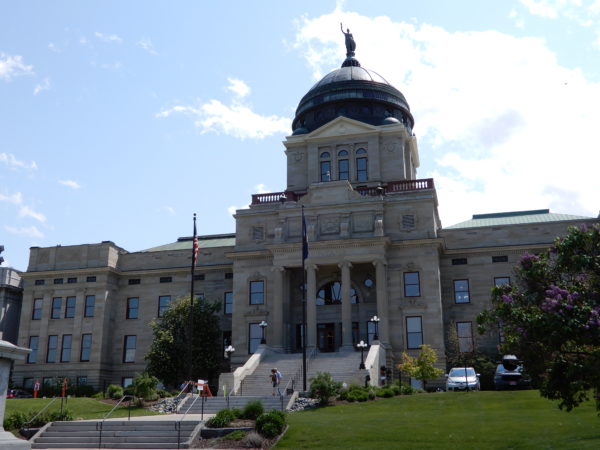
A first nation-wide attempt at selecting a design for the state capitol ended poorly after it was discovered the capitol commissioners planned to defraud the state of substantial portions of the building’s cost. The commissioners were replaced, funding was secured and architects from Iowa were selected with the condition that they move to Montana. The building is American Renaissance neoclassical. It took three years to construct and was finished in 1902 at a cost of about $540,000.
As so often happens, the government outgrew the building and additions were required. The legislature, in special session, decided to face the addition with granite which they thought a good visual match for the sandstone of the original building.
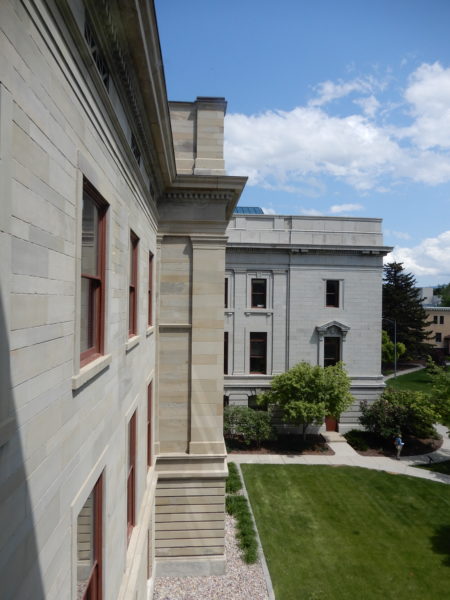
Granite on the left, original sandstone on the right.
The rotunda is French Renaissance with columns of scagliola (a plaster technique to look like marble) and Tennessee marble wainscotting.
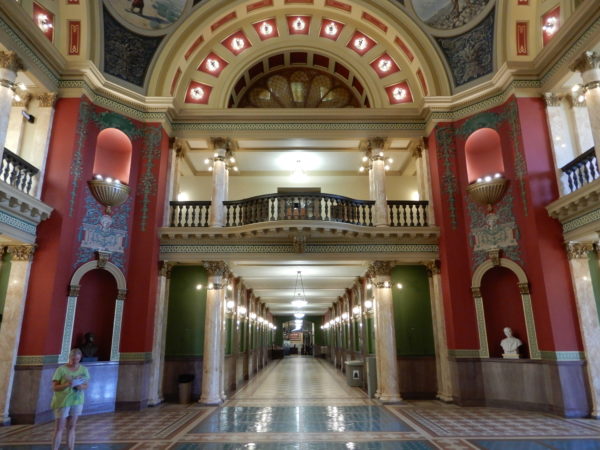
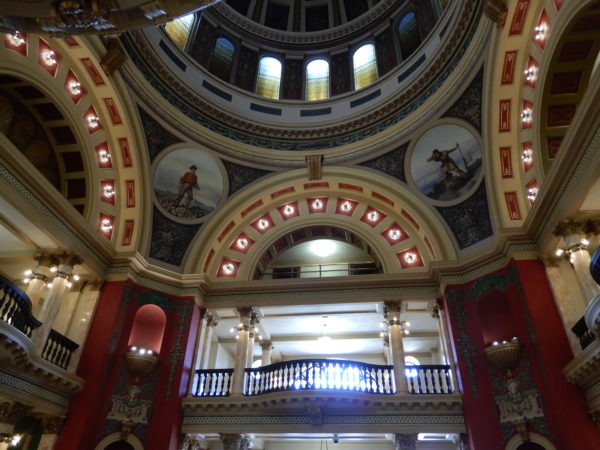
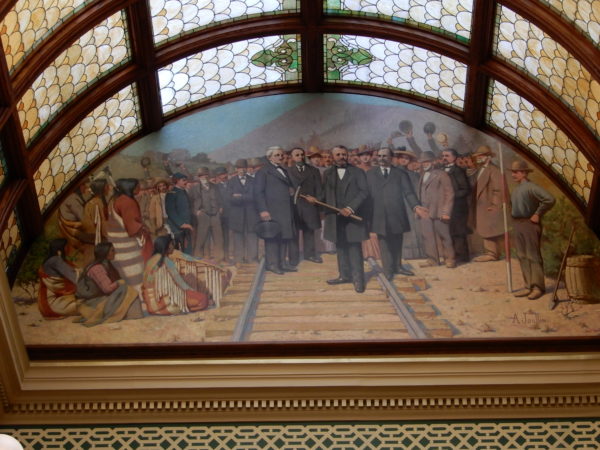
This painting documents the completion of the Northern Pacific Railroad’s transcontinental line at Gold Creek, Montana in 1883.
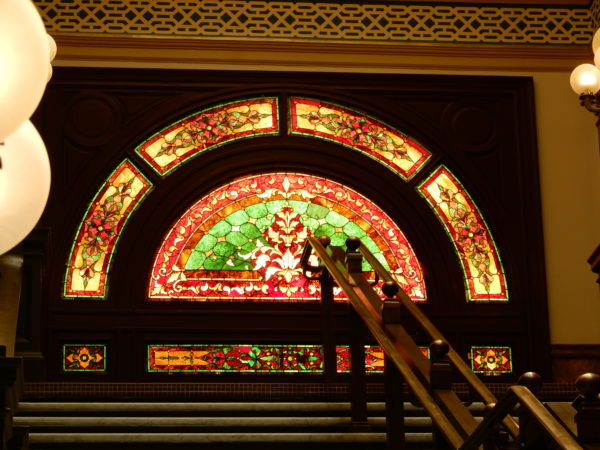
Stained glass at the top of the staircase in the rotunda.
Four pictures under the dome feature an Indian chief, a cowboy, a trapper and a prospector.
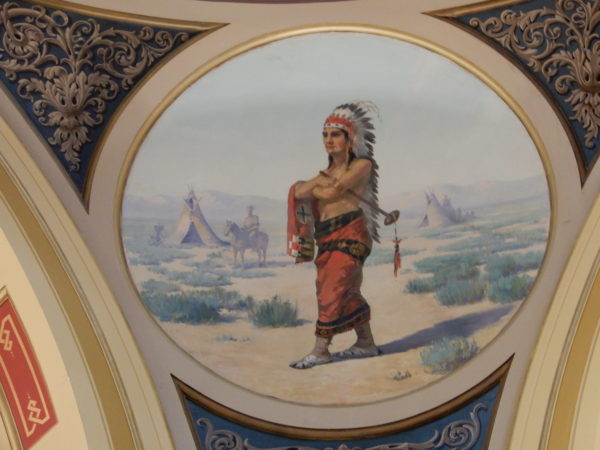
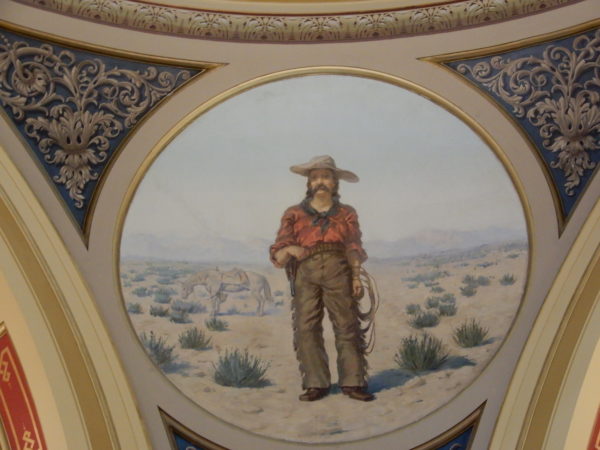
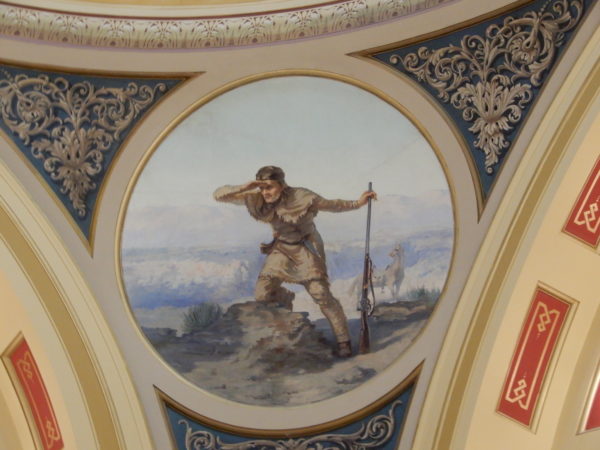
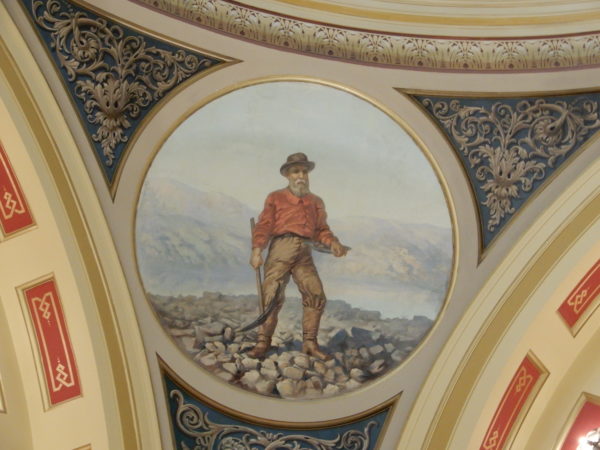
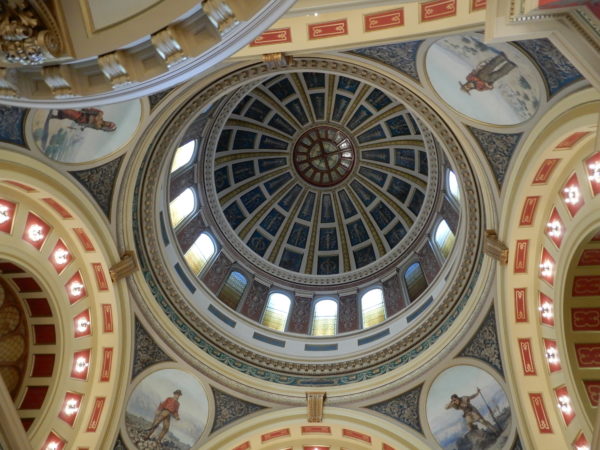
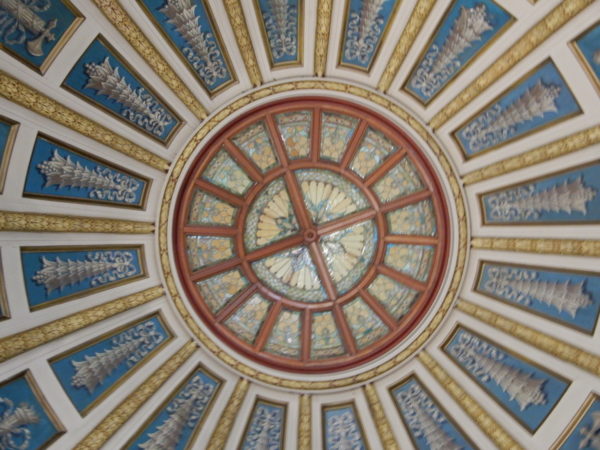
The original Senate chamber became home for the state Supreme Court and then became a committee hearing room and public meeting room.
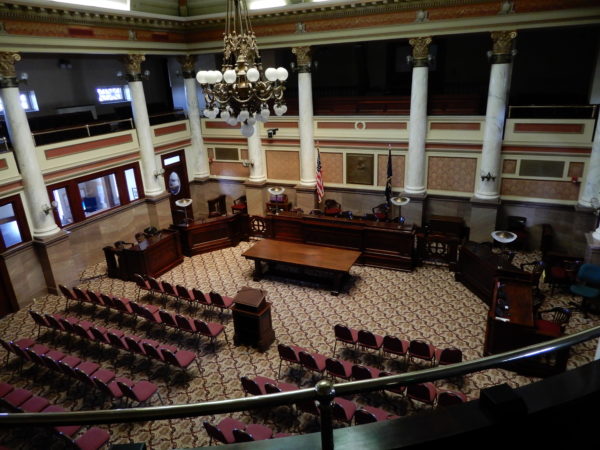
The Senate uses space which was originally the House chamber.
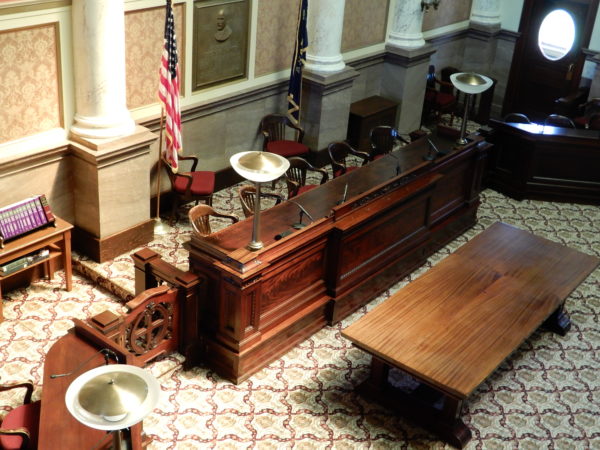
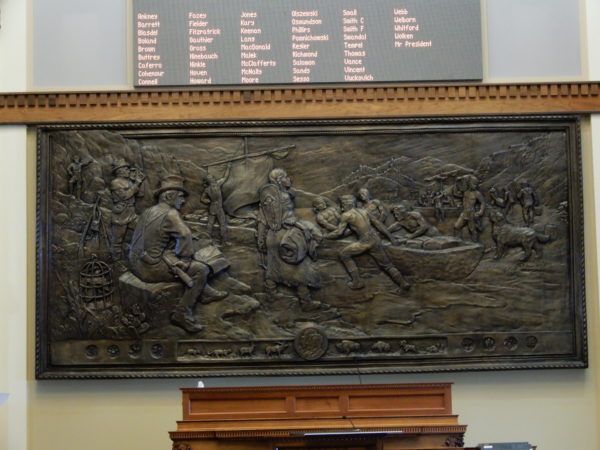
“We Proceeded On” celebrates the hundredth anniversary of Lewis and Clark’s expedition
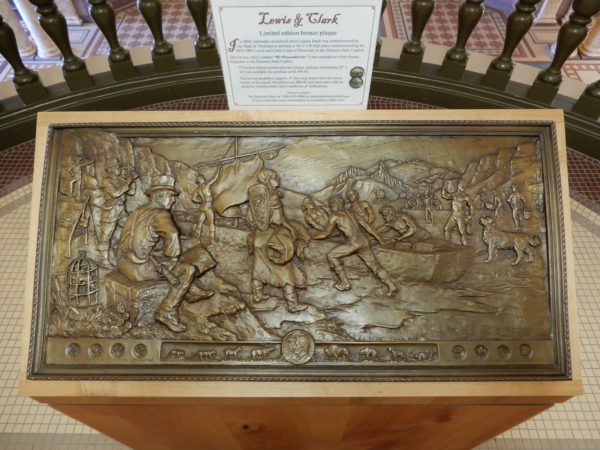
A smaller version shows some of the rich detail.
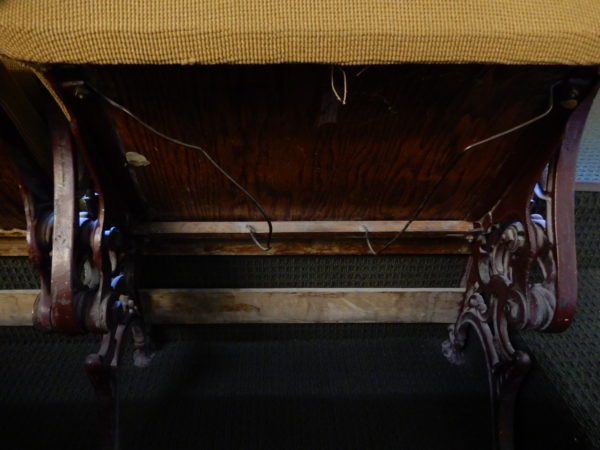
Wire racks designed to hold cowboy hats are installed under the seats in the gallery.
The House of Representatives occupies the west wing of the 1912 addition to the Capitol.
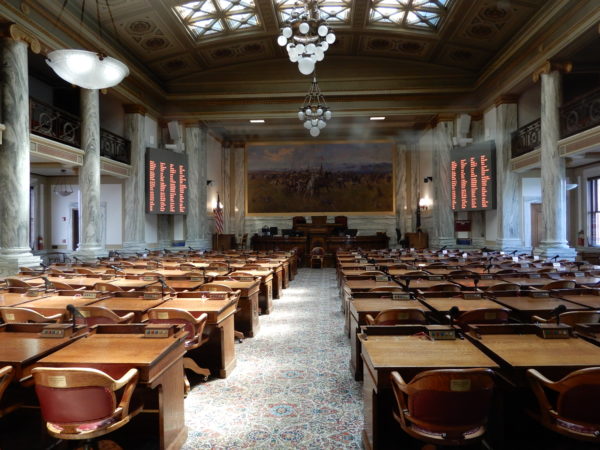
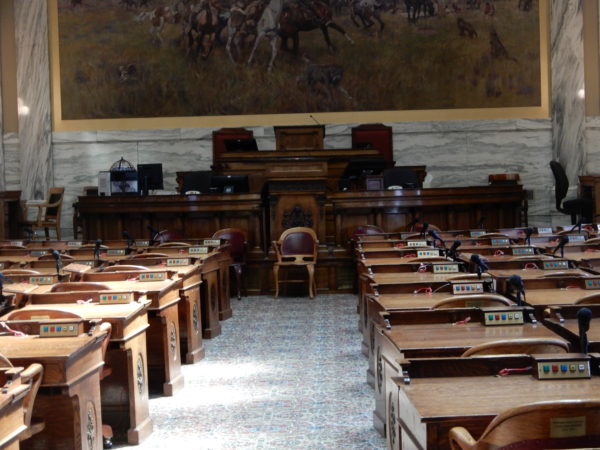
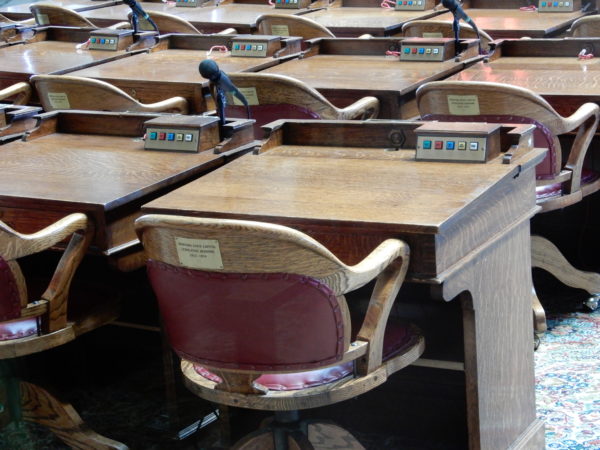
Charles M. Russell’s painting Lewis and Clark Meeting Indians at Ross’ Hole is a focal point. Russell tried to show the meeting from the perspective of the Salish Indians, so Lewis and Clark are pictured to the right. The canvas is so large that the roof of Russell’s log cabin studio had to be raised to accommodate it.
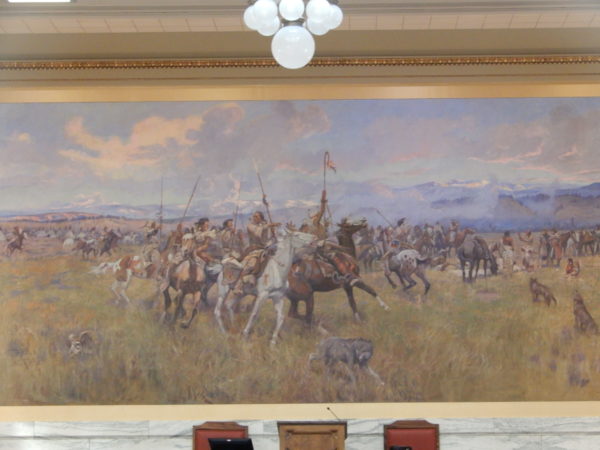
Montana Historical Society
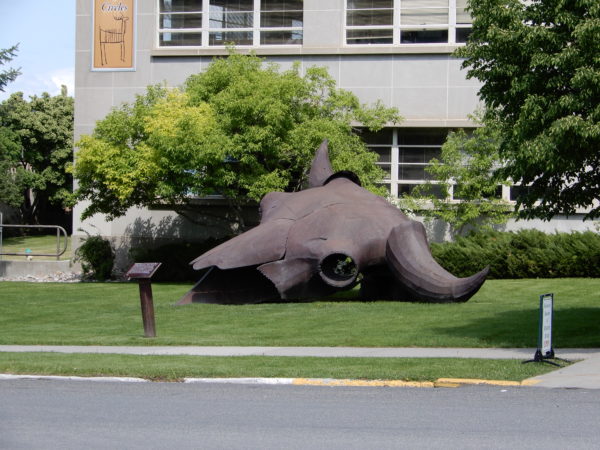
“Herd Bull”, a two and a half ton sculpture of recycled metal, decorates the grounds of the museum.
Montana’s resources include sapphires and agates.
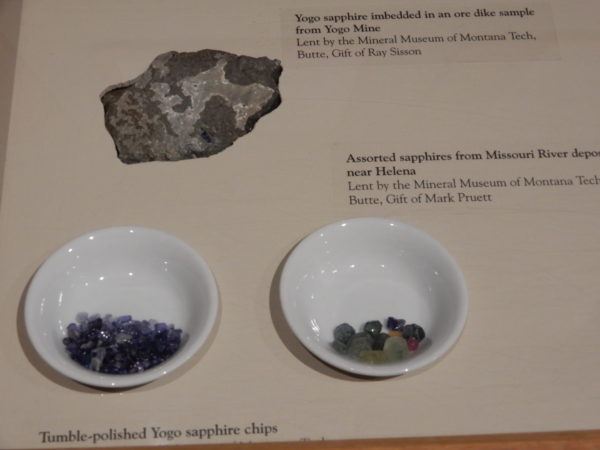
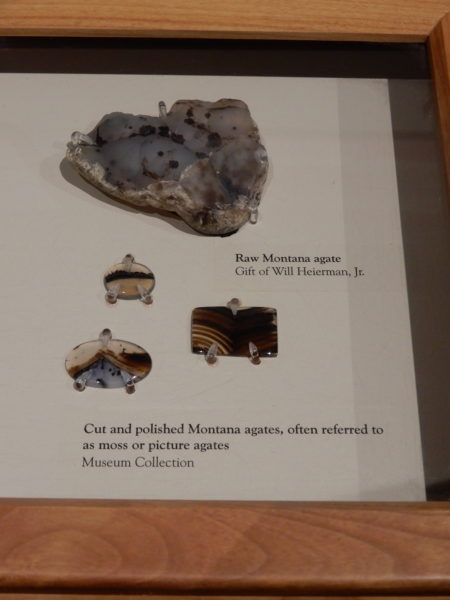
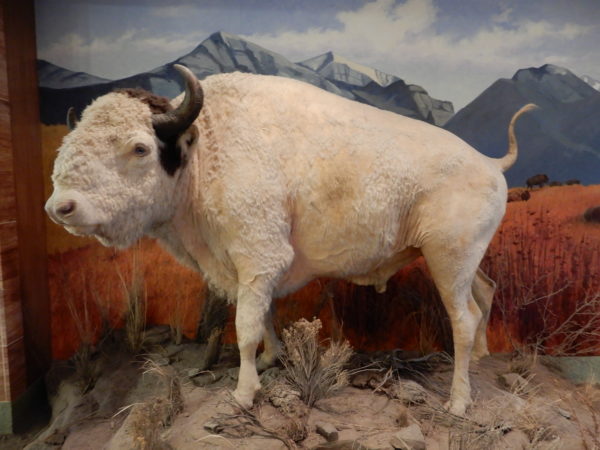
Big Medicine, a white bison, was born on the Flathead Reservation and lived for 26 years.
Jane and Dave tried on a buffalo robe and can testify that it is warm.
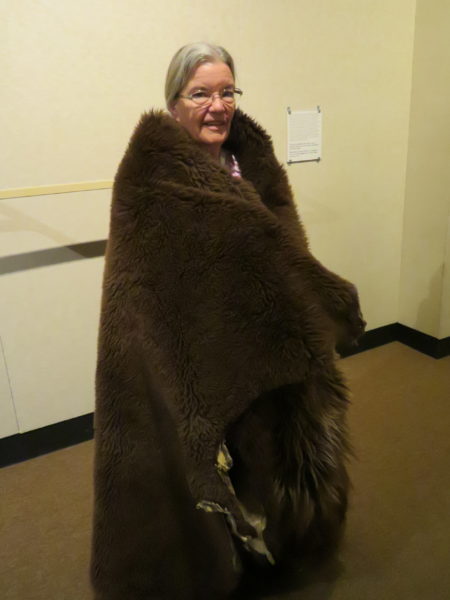
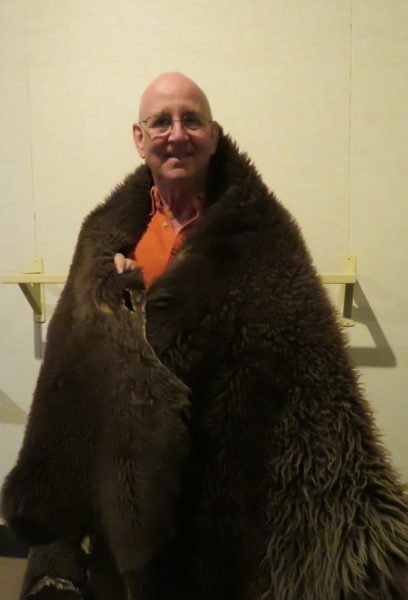
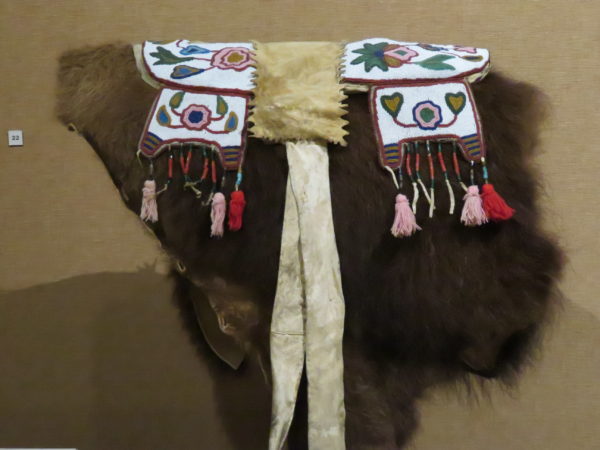
Salish pad saddle from 1890
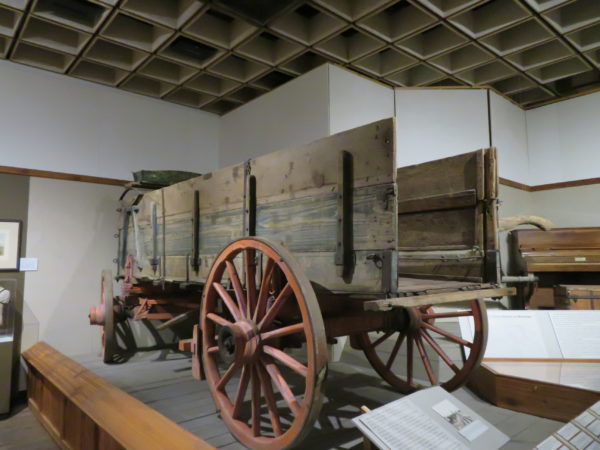
A wagon like this one could hold two tons of freight.
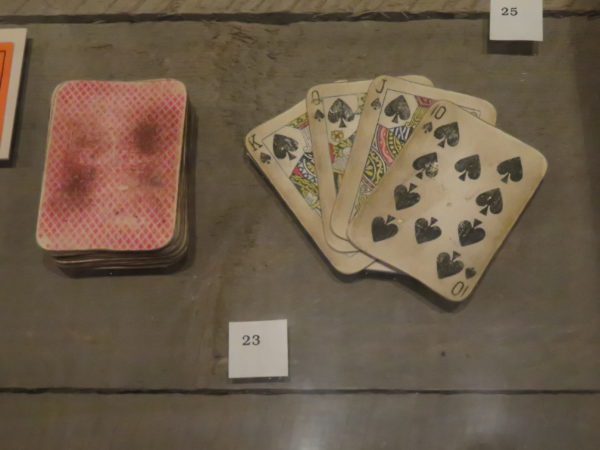
A deck of cards used at Last Chance Gulch 1869
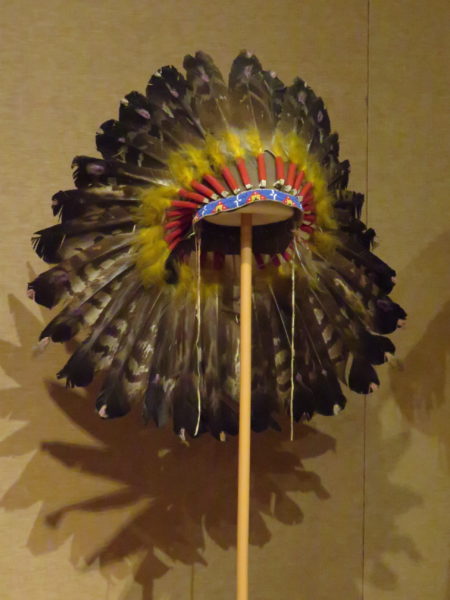
Sioux feather bonnet from about 1900
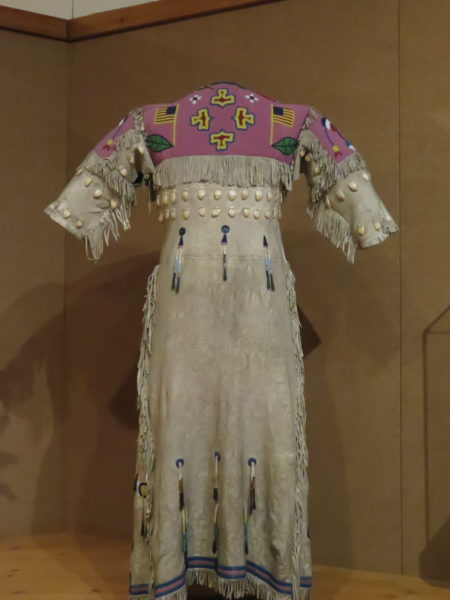
Assiniboine buckskin dress from about 1900
The museum hosts a major collection of the works of western painter Charles M. Russell. We photographed a sampling.
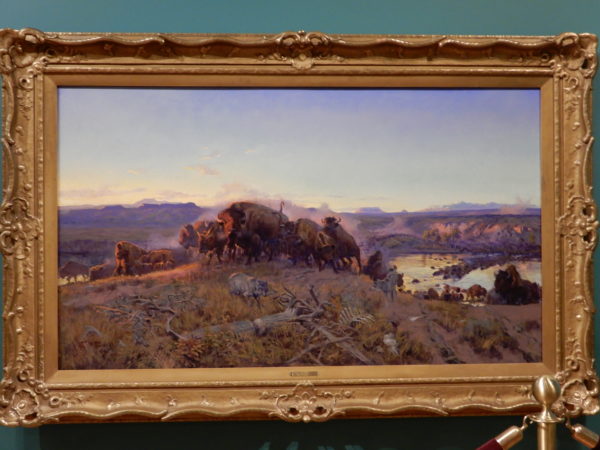
When the Land Belonged to God, 1914
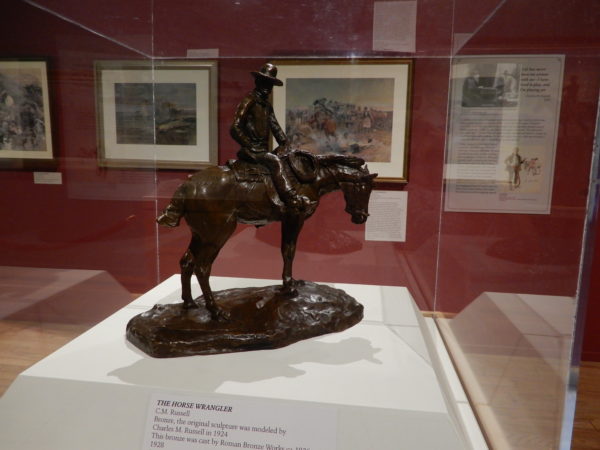
The Horse Wrangler, bronze, 1928
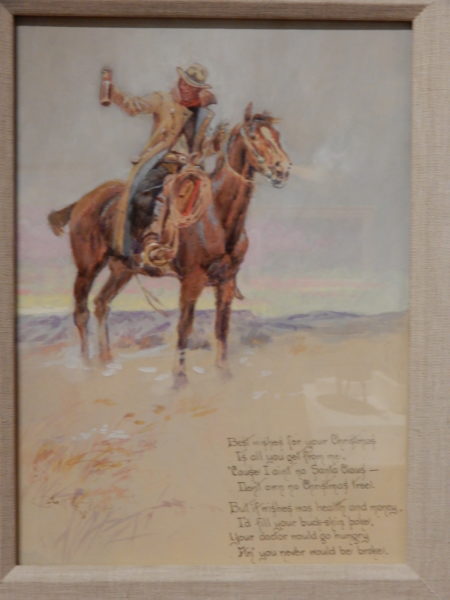
Christmas card, 1914
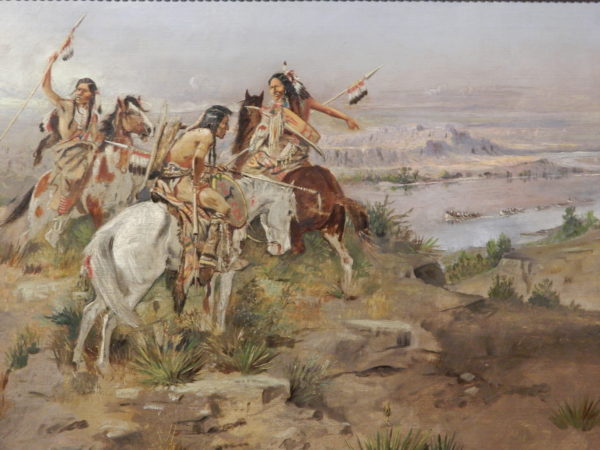
Indians Discovering Lewis and Clark, oil, 1896
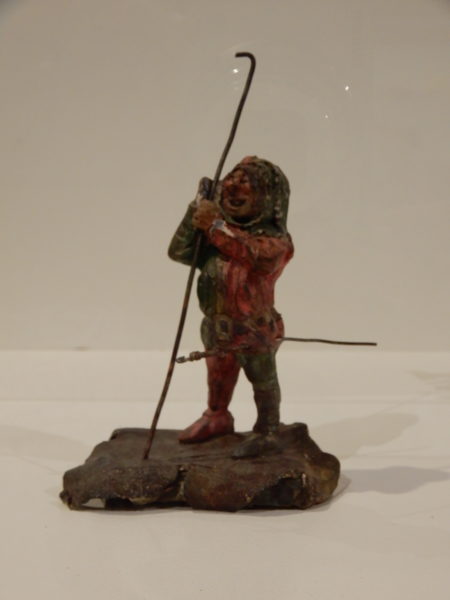
Puck, clay, 1902
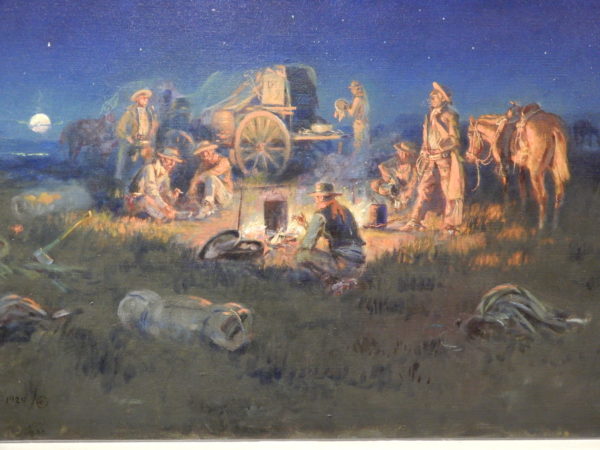
Laugh Kills Lonesome, oil, 1925. Russell painted himself standing by a horse in the right side of the picture.
On the Streets of Helena
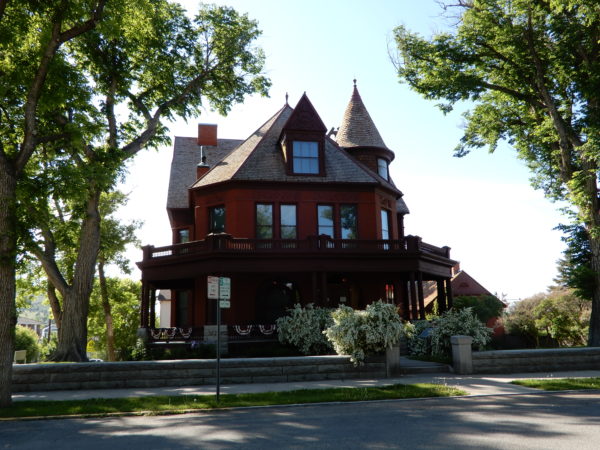
Historic governor’s mansion
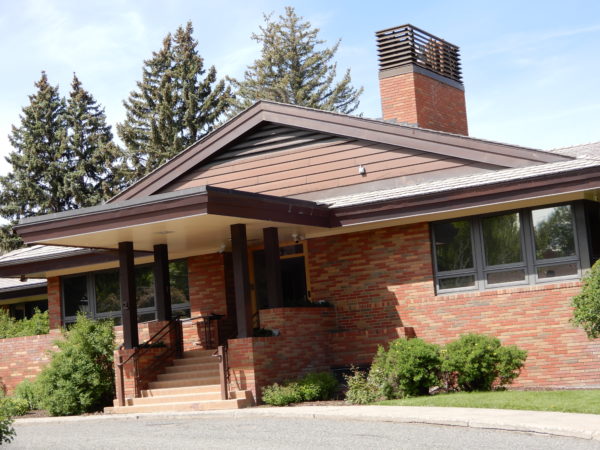
Existing governor’s mansion
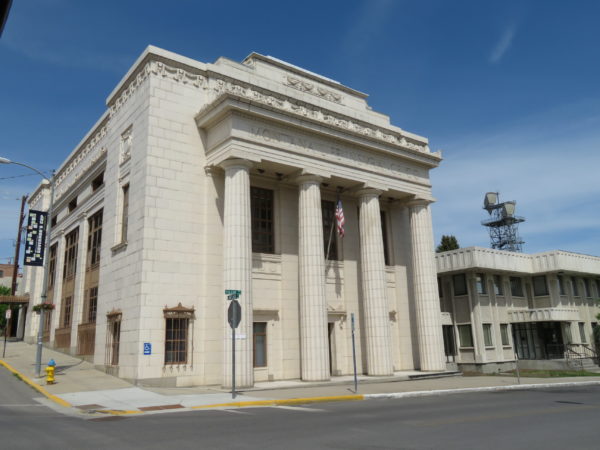
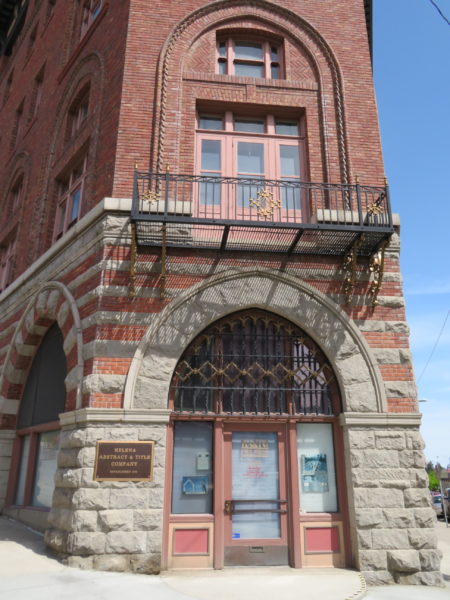
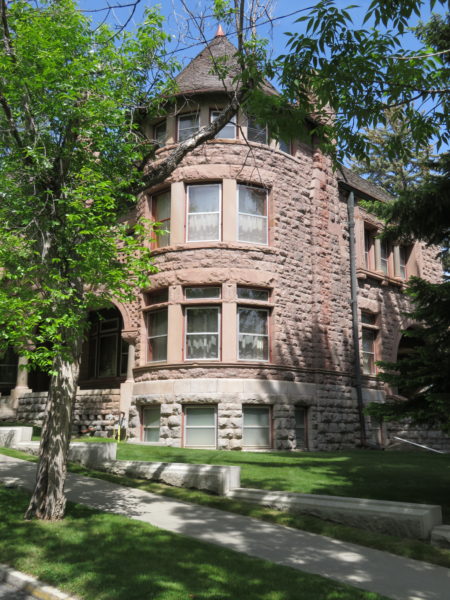
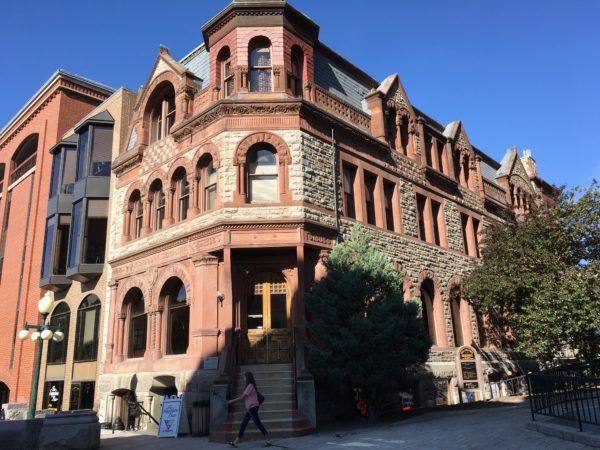
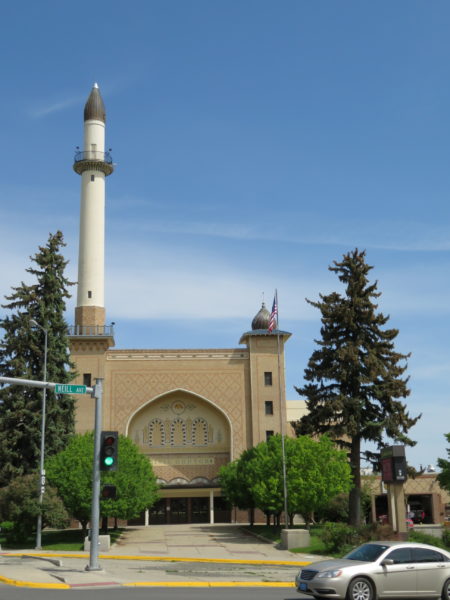
Algeria Shriners, a group founded on Masonic principles, built this temple in 1919. It’s now used as a civic center.
Cathedral of St. Helena
This building was modeled after a cathedral in Vienna. It was constructed between 1908 and 1924.
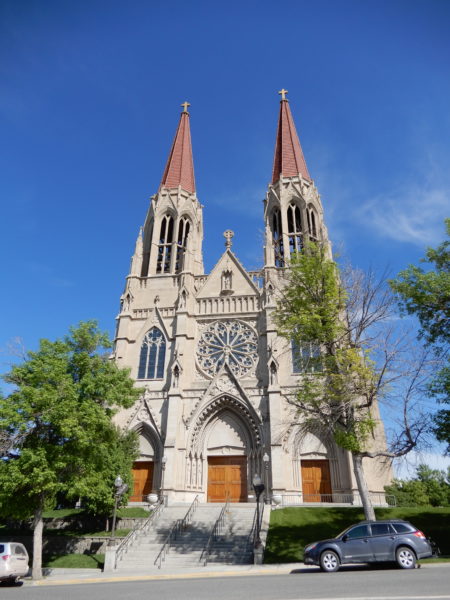
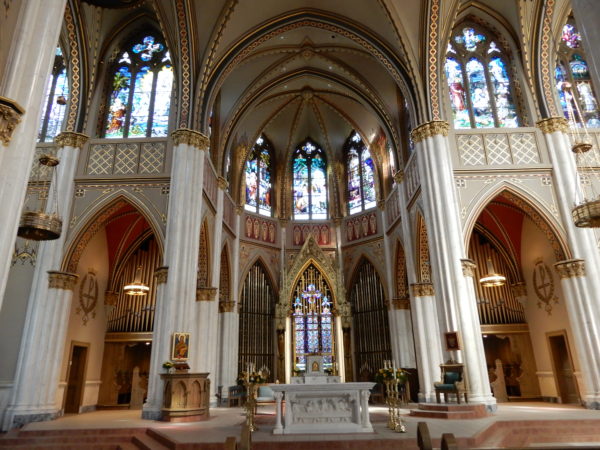
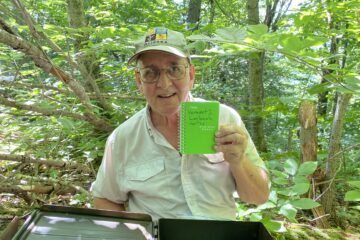
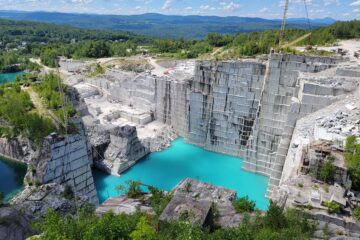
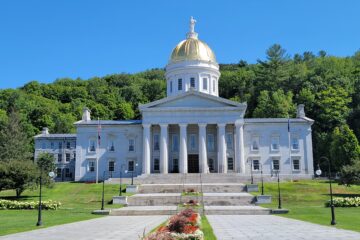
0 Comments